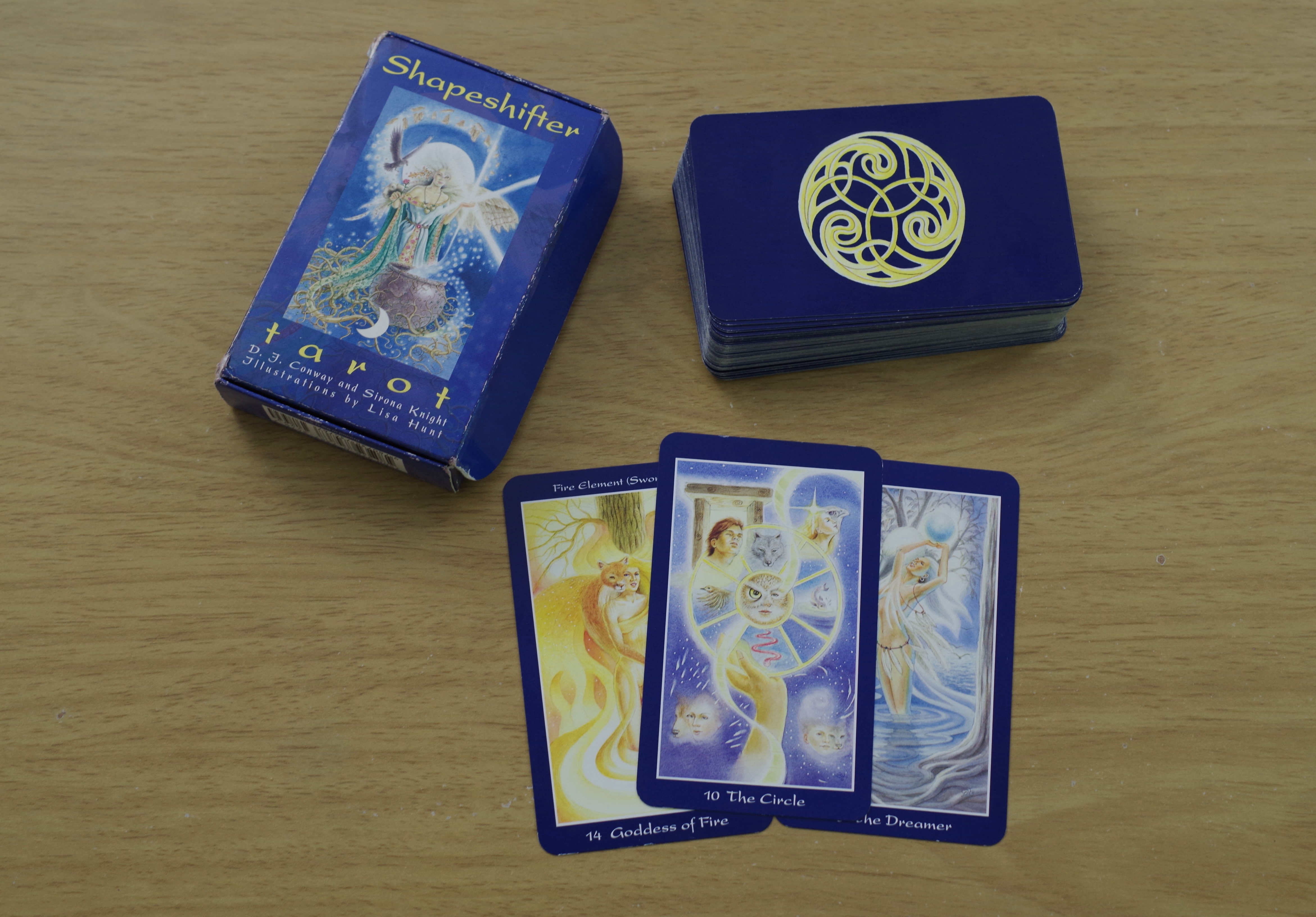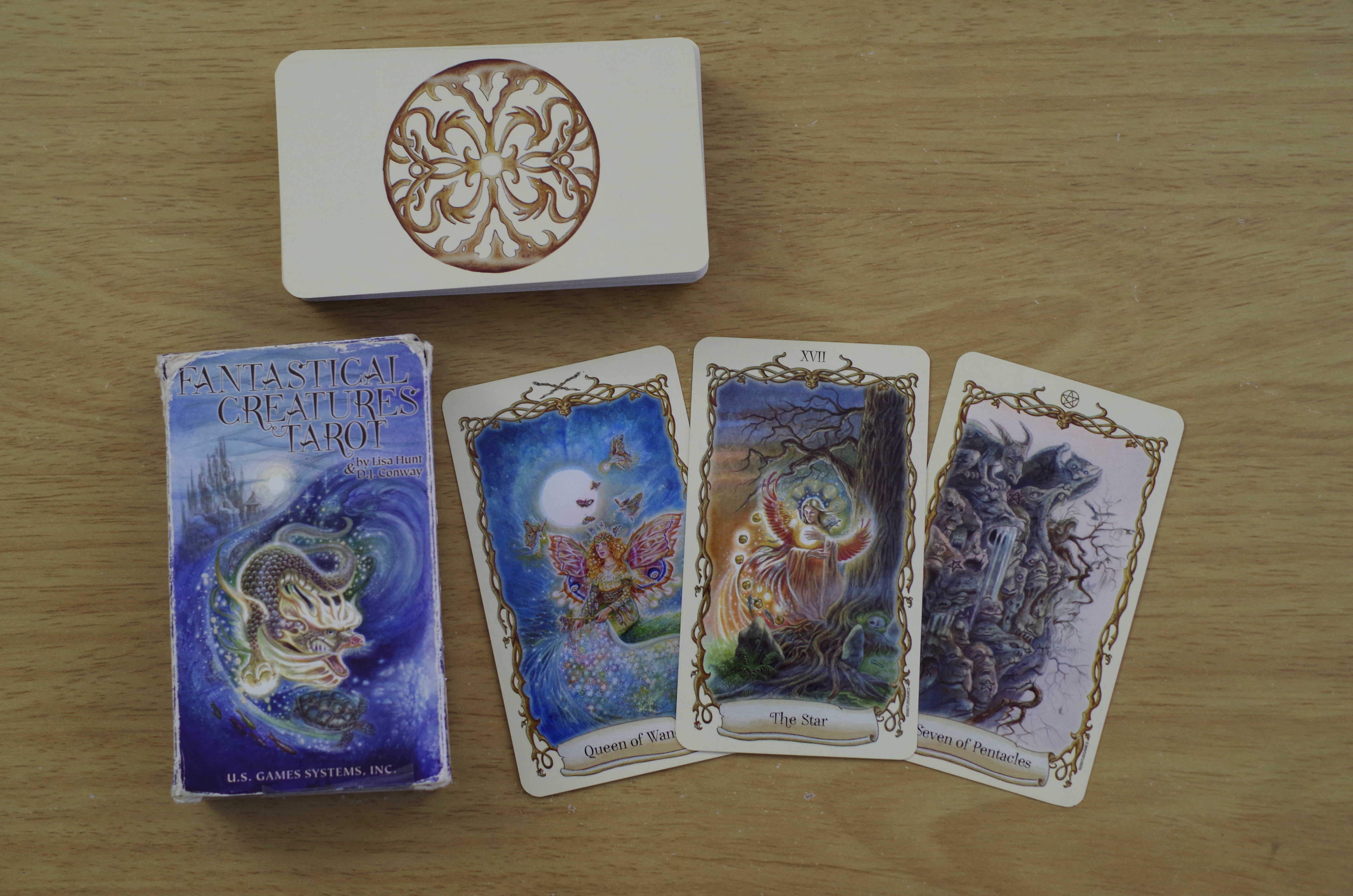Coyle, T Thorn. Evolutionary Witchcraft. Jeremy P. Tarcher/Penguin, 2005.
I recently attended a book club meeting held by a non-denominational pagan group I belong to called The Fellowship Beyond the Star that discussed this book, and I thought I would share some of my personal insights and opinions here as well.
The book is written as both an informational and experiential introduction to Coyle’s Feri/Reclaiming tradition, geared towards the solitary beginning practitioner. However, the exercises in the book get more advanced as it goes on, and it is very likely that the intermediate or even advanced practitioner of another tradition would find a lot of the work worthwhile. My main impression of the book as regards my personal practice is that Feri definitely isn’t the path for me (despite my strong ties to the Fae in general). It’s still too close, structurally, to Wicca and related initiatory traditions for me and I don’t find the ecstatic sexuality focus any more comfortable than I find Wicca’s procreative/fertility focus. However, I did find many of the individual exercises very helpful either as they were intended to be used, or as sounding boards for engaging more deeply with what I practice and believe, especially in places where Coyle’s clashed with my own. I find it useful to periodically examine not just what I do, but how and why, and this book certainly facilitated that process for me.
The book itself is very straightforward in structure. The introduction and the first section of each chapter outline what follows, and the chapters themselves follow the form of a ritual that is the organizational schema for the whole book: a sphere casting that uses seven directions (East, South, West, North, Above, Below, and Center). Each of these directions is given correspondences, a tool (wand, chalice, etc), and a Guardian, and various exercises related to the theme of the chapter are presented. The writing is very easy to follow, and is poetic without being verbose or abstruse. Sub-headings break up the chapters neatly, making it easy to find a place to stop (this really isn’t a book you want to read straight through unless you’re going to go back and do the exercises on your second pass). The last chapter has a self-initiation for those who wish to continue down this path in a solitary way, and it also contains ideas for moving forward, using this book as a foundation for a personal path. At the end, Coyle includes an appendix with recommended further reading, and a pretty comprehensive index.
One of the central works of the Feri/Reclaiming tradition(s), the Iron Pentacle, is presented in the chapter on the South, “because it uses the fire of red, iron earth energy as a catalyst for transformation and re-balancing” (p 114). This tool is used for personal wholeness, the task of becoming more completely human, Coyle says. Its partner tool, the Pearl Pentacle, is in the chapter on the West and water, and is a tool for balancing our interpersonal lives. Both pentacles can serve as the backbone for deep work, but neither spoke to my energies and needs as well as I had hoped. They did, however, spark me to brainstorm the sort of tool that might work for what I struggle with, and I have been jotting down a multitude of thoughts on a similar set of septagrams.
Many of the chapters had bits of lore and pathworkings about the Gods of Feri as well as the Guardians of each direction, and though I found some of it very interesting, it doesn’t really fit my personal cosmology and (perhaps because of that) I had a difficult time getting more than the briefest hint of an impression from the majority of these new gods. I did, however, find that their Star Goddess, Quakoralina, seems to be analogous to a being I call Star Mother, even if the details of my personal mythology differ from what Coyle presents in the book.
In general, my experience of this book reflects a topic Coyle touches on in chapter 8, on the Powers Below: the idea of two disparate things coming together to create a third. Coyle discusses the cauldron as the tool for this direction, a tool of alchemy and transformative change, and she says
“…the cauldron’s power shows the beauty of friction, of the Pythagorean harmonic of two notes played together forming a third, or the reconciling force of grace that rises from a yes met by a no. It is the third road that leads to [F]aery, the place of paradox.
We have the ability to hold disparate things, to hold them until the very tension of the holding creates its own heat. Then something new can emerge within us.” (p 231).
I held my practice as it was, and this book as it was written, and where they clashed a new understanding emerged within me. Feri/Reclaiming may not be the path for me, but in exploring this path through Coyle’s book, I saw parts of my own path more clearly. While I obviously recommend reading this book to anyone who does find Feri/Reclaiming appealing, I also highly suggest reading this book to anyone who could use the sort of deep engagement with their own practice that I experienced while working through it. I will definitely be leaving this book as a reference on my shelf for years to come.





